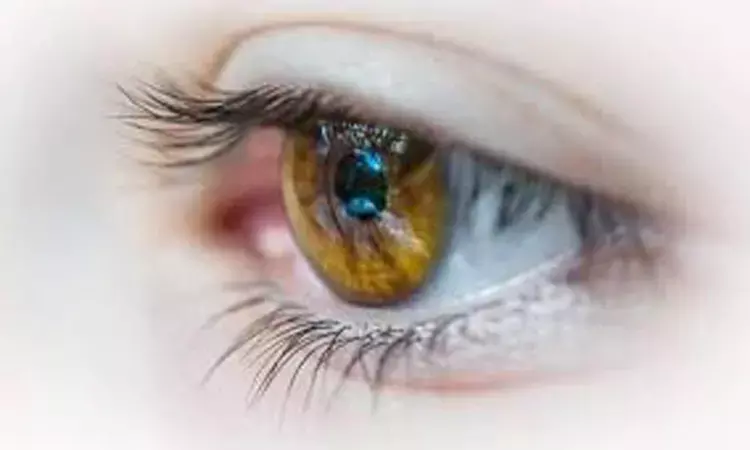- Home
- Medical news & Guidelines
- Anesthesiology
- Cardiology and CTVS
- Critical Care
- Dentistry
- Dermatology
- Diabetes and Endocrinology
- ENT
- Gastroenterology
- Medicine
- Nephrology
- Neurology
- Obstretics-Gynaecology
- Oncology
- Ophthalmology
- Orthopaedics
- Pediatrics-Neonatology
- Psychiatry
- Pulmonology
- Radiology
- Surgery
- Urology
- Laboratory Medicine
- Diet
- Nursing
- Paramedical
- Physiotherapy
- Health news
- Fact Check
- Bone Health Fact Check
- Brain Health Fact Check
- Cancer Related Fact Check
- Child Care Fact Check
- Dental and oral health fact check
- Diabetes and metabolic health fact check
- Diet and Nutrition Fact Check
- Eye and ENT Care Fact Check
- Fitness fact check
- Gut health fact check
- Heart health fact check
- Kidney health fact check
- Medical education fact check
- Men's health fact check
- Respiratory fact check
- Skin and hair care fact check
- Vaccine and Immunization fact check
- Women's health fact check
- AYUSH
- State News
- Andaman and Nicobar Islands
- Andhra Pradesh
- Arunachal Pradesh
- Assam
- Bihar
- Chandigarh
- Chattisgarh
- Dadra and Nagar Haveli
- Daman and Diu
- Delhi
- Goa
- Gujarat
- Haryana
- Himachal Pradesh
- Jammu & Kashmir
- Jharkhand
- Karnataka
- Kerala
- Ladakh
- Lakshadweep
- Madhya Pradesh
- Maharashtra
- Manipur
- Meghalaya
- Mizoram
- Nagaland
- Odisha
- Puducherry
- Punjab
- Rajasthan
- Sikkim
- Tamil Nadu
- Telangana
- Tripura
- Uttar Pradesh
- Uttrakhand
- West Bengal
- Medical Education
- Industry
Case of Retinal Vein Occlusion Due to COVID-19 Reported in IJO

Dr Jay Umed Sheth from Surya Eye Institute and Research Centre, Mumbai and his associates have reported a novel case of vasculitic retinal vein occlusion due to COVID-19.
The case report has been published in the Indian Journal of Ophthalmology.
A 52-year-old male patient, diagnosed around 10 days back by PCR as positive for COVID-19, presented with complaints of decreased vision in the left eye for the past 1 day. The clinical and ocular investigation findings in the left eye were as follows:
- Best Corrected Visual acuity was 6/60
- Fundus examination showed inferior hemiretinal vein occlusion with superonasal branch retinal vein occlusion and macular oedema
- Fundus fluorescein angiography (FFA) revealed dilated and tortuous retinal veins in inferior and superonasal quadrants. There was significant vessel wall staining and leakage in late phases suggestive of extensive phlebitis. There was no evidence of arteritis or perivascular sparing.
- Spectral-domain optical coherence tomography (SD-OCT) showed presence of serous macular detachment and significant cystoid macular edema (CME).
Systemic workup for vasculitic and non-vasculitic causes of retinal vein occlusion was done. Evaluation of blood pressure, complete blood count, erythrocyte sedimentation rate, serum lipid profile, sugar levels, plasma protein electrophoresis, C-reactive protein, serum homocysteine level, serum angiotensin-converting enzyme (ACE), tuberculin skin testing, QuantiFERON-TB Gold and thrombophilia-screening showed no significant abnormality.
A presumptive diagnosis of vasculitic retinal vein occlusion secondary to COVID-19 was made due to PCR positivity to the same and absence of any other associated cause. Systemic vasculitis due to COVID-19 secondary to Type 3 hypersensitivity reaction and triggering of cytokine storm by the deposition of immune complexes has been extensively reported. According to the authors, the retinal vasculitis in this patient could be a part of this spectrum of systemic immune mediated vasculitis. Similar occlusive retinal vasculitis has been reported with other viral infections like dengue and chikungunya
Based on this presumptive diagnosis, the patient was treated with oral methylprednisolone and intravitreal anti-vascular endothelial growth factor (anti-VEGF) injection. Recent studies recommend treatment with steroids and anti-coagulants like heparin to prevent thromboembolic complications associated with systemic vasculitis in COVID-19. Oral steroids were started in accordance to the same. At the end of a month, the best corrected visual acuity in the left eye improved to 6/9 with complete resolution of the serous detachment and edema at the macula.
Ocular manifestations in COVID-19 are uncommon with conjunctivitis being reported as the most common presentation. A few reports of intraretinal haemorrhages and cotton wool spots are also present in literature.
"Knowledge of this new entity will help us remain vigilant about similar vision-threatening complications while dealing with patients of COVID-19", conclude the authors.
For reading full case report with clinical photographs, click on the link
Dr Sudha Seetharam is an Ophthalmologist practising at Laxmi Eye Institute, Maharashtra. She has received her MBBS from Medical College, Kolkata and M.S (Ophthalmology) from Maulana Azad Medical College, New Delhi. Writing and teaching are her passions. She is the author of the book “Self-assessment and Review of Ophthalmology” meant for MBBS students preparing for NEET PG Medical Entrance examination. She is a faculty of Ophthalmology at various teaching institutes and online platforms which train students for NEET PG Medical Entrance examination. She has also authored the book “Beyond Medicine- Life Lessons Learnt as a Doctor” which describes the real life experiences of a doctor during internship in a government hospital.
Dr Kamal Kant Kohli-MBBS, DTCD- a chest specialist with more than 30 years of practice and a flair for writing clinical articles, Dr Kamal Kant Kohli joined Medical Dialogues as a Chief Editor of Medical News. Besides writing articles, as an editor, he proofreads and verifies all the medical content published on Medical Dialogues including those coming from journals, studies,medical conferences,guidelines etc. Email: drkohli@medicaldialogues.in. Contact no. 011-43720751


